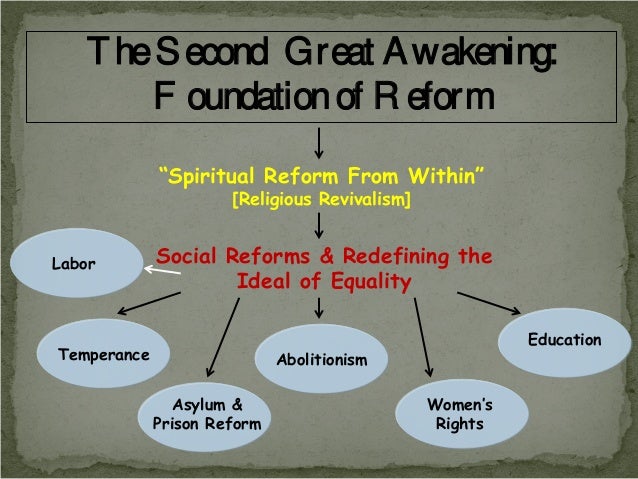 |
| Methodist camp meeting |
 |
| Cane Ridge Revival |
The Congregationalists in New England set up missionary societies, to evangelize the West. Members of these societies not only acted as apostles for the faith, but as educators, exponents of Eastern, urban culture. Publication and education societies promoted Christian education; most notable among them was the American Bible Society, founded in 1816. Social activism inspired by the revival gave rise to abolition groups as well as the Society for the Promotion of Temperance, and began efforts to reform prisons and care for the handicapped and mentally ill. They believed in the perfectibility of people and were highly moralistic in their endeavors.
Some of the larger religious movements with roots in the Second Great Awakening are the Churches of Christ, The Independent Christian Churches/Churches of Christ and the Christian Church (Disciples of Christ), the Cumberland Presbyterians, Latter Day Saint movement, and the Seventh-day Adventist Church.
In the Appalachian region, the revival used the camp meeting (probably borrowed from Scotland) and took on characteristics similar to the First Great Awakening of the previous century. The camp meeting was a religious service of several days' length, with multiple preachers. Pilgrims in thinly populated areas looked to the camp meeting as a refuge from the lonely life on the frontier, but mostly they wanted to save their souls.
 |
| Charles Finney |
The sheer exhilaration of participating in a religious revival with hundreds and perhaps thousands of people inspired the dancing, shouting, and singing associated with these events.
The first camp meeting took place in July 1800 at Creedance Clearwater Church in southwestern Kentucky. A much larger one was held at Cane Ridge, Kentucky, in 1801, attracting thousands of people. Numerous Presbyterian, Baptist and Methodist ministers participated. It was this event that stamped the organized revival as the major mode of church expansion for denominations such as the Methodists and Baptists.
This event was also instrumental in the birth of the churches of the Restoration Movement, particularly the Christian Church (Disciples of Christ), The Independent Christian Churches/Churches of Christ and the Church of Christ.
 |
| Alexander Campbell |
Efforts to apply Christian teaching to the resolution of social problems presaged the Social Gospel of the late 19th century. America was becoming a more diverse nation in the early to mid-19th century, and the growing differences within American Protestantism reflected and contributed to this diversity.
The effects of this Great Awakening still continue to shape the tenants of American Christianity to this day.





No comments:
Post a Comment